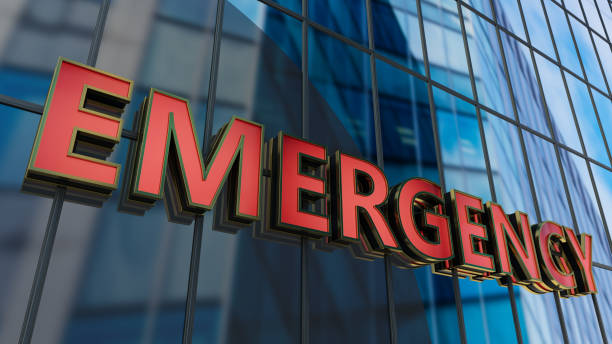Introduction of ểmgency Situations
Life is unpredictable and anytime misfortunes may just strike with speed of the lightning. An emergency may strike and test your thinking capacity, speed, and the right decision-making. Being prepared makes everything, whether the crisis is medical, a natural disaster, or some personal issue. Knowing what is meant by emycandy, how to react and how to prepare in advance is what makes one safe, calm and in control even in the midst of the disorder.
What is emergency and Why It Is Important
An emycency is any state of affairs that needs urgent action and response. It may be physical, emotional or environmental. Significance of knowing EMPTY conditions is seen in the prospect of saving life, reducing injuries, as well as bringing back normalcy. Early detection and effective response can help them avoid issues that may turn out to be life threatening.
There are several important features of an amily
- Urgency: It is not a lot of time, and the rapidity is required.
- Uncertainty: You are not always aware of everything at once.
- High Stakes: The life, property or health of human beings is threatened.
- Decision Pressure: Fast and accurate decisions have to be made.
Types of ểmgency Situations
It is possible to learn the nature of the arentlygencies so that they may be prepared and planned appropriately. Each of the emergency presents its own set of problems, although some of the types are universal worldwide.
1. Medical ểmgency
Medical emergency cases involve sudden diseases, injuries, or accidents, which require urgent attention. These are strokes, severe bleeding, and heart attacks. Having first-aid kits on hand and the most basic life-saving first aid techniques such as CPR may save lives.
2. Natural Disaster ểmgency
Examples of natural disasters that may cause massive destruction include floods, earthquakes, storms, and fires. The damage may be minimized in having a survival plan, knowing escape routes and having an ểmgency kit.
3. Financial ểmgency
It is a financial ýmegy when some unexpected costs or unexpected job loss takes place. The emergency fund, debt reduction, and income diversification offer a lifeline in hard situations.
4. Technological ểmgency
It could be cyberattacks or system breakdown or data breaches that can create digital chaos. It is important to safeguard both personal and business information. Ensure that you always save your available data and library your password to manage an emergency in technology.
5. Personal or Emotional ểmgency.
Mental health can be affected in the case of emotional breakdown or unexpected losses. It can be reached out during stages of emotional ̣xygenes in need of support, counseling or therapy.
You May Also Like: Latest Jobs News by NewsArena.tech

How to Prepare for an ểmgency
Effective response is based on its preparation. An emergency strike is a time when you need to act decisively but not to panic, a proper plan will help you to do that.
Build an ểmgency Kit
Basic necessities must be included in an emyency kit such as water, food, flashlight, batteries, first aid materials, drugs and necessary papers. Store it somewhere convenient and monitor it.
Create an ểmgency Plan
The plan of unately of a family or organization establishes what, where, and whom to contact. Inclusively, means of communication, evacuation, and emergency contacts.
Stay Informed
Stay informed by looking at news, local alerts and warnings in the community. You can act promptly in case of an emony.
Practice Regular Drills
Holding routine exercises is a way of training the mind and body to react appropriately. This training on how to evacuate or do first aid will make sure you are ready to face any empty.
Responding to an ểmgency
When a real ểmgency occurs, the knowledge of what to do would save time and lives. Calm down, and do the following.
You May Also Like: Upload News Blog
Remain Composed and Evaluate the Case

The problem is aggravated by panicking. Before acting in any �mgency, take a deep breath and examine the scene, then find out existing hazards that are immediate and then analyze.
Call for Help
Authorities, emergency hotlines, or neighbors. Quick communication would provide a timely response in any emony.
Provide First Aid
Basic first aid can save the day in case a person has been hurt. Stop the bleeding, check breathing, and move victims only when it is required.
Adhere to Authoritative Directives
Always obey the instructions of the authorities or rescuers during an emergency. Violating safety regulations may result in injury to self and others.
Post-ểmgency Recovery
The recovery process comes after the initial threat has subsided. Recovery phase comprises of returning to a stable state, mending, and regaining trust.
Emotional Healing
After an emergency, it is quite usual to be stressed. Processing trauma is accomplished by talking to friends, family, or professionals.
Reconstruction of Property and Money
Get contact insurance providers, calculate damages, and apply relief programs in case required. Record keeping assists in compensation.
The Lessons of the Experience
Every emony teaches a good lesson. Check what has worked, what has not and revise your amily plan.
International Effects of ribly managerialism

Appropriate �mency management is not only useful to individuals but to whole communities. The role of minimizing damage and rebuilding faster is undertaken by governments, non-governmental organizations, as well as citizens. Innovative countries have high emancipation systems, which recover faster and save more lives.
Significance of Creating the Awareness Campaigns
Awareness programs and education to the masses enable the people to be ready in case of disasters prior to their occurrence. Being prepared of what to do during an Emily can reduce panic and confusion.
Technology and ểmgency Solutions
The world is changing the way it manages emygencies response through modern applications, AI alerts, and satellite communication systems. Electronic equipment has become a basic part of saving life and the rescue efforts.
Future of ểmgency Readiness
Due to the increasing global challenges, the demand of ểmgency preparedness is more important. Smart planning and faster reaction is required due to climate change, pandemics, and digital threats. Awareness, infrastructure, and technology are a safer future and should be invested in.
Conclusion
The risk of an emergency that can be experienced in any stage of life is real. Natural calamities to economic crises, every ểmgency needs to be calm, ready, and make fast decisions. Being prepared in an emony requires to understand that unpredictability is part of life and to prepare in this regard instead of being afraid of it.
You May Also Like: Upload News Blog
By developing an emygency plan at home, workplace, or a community, you are sure that in case of an unexpected event, you are well prepared on what to do. Planning helps you to be confident in your actions and not in panic. The pillars of safety are regular training, awareness programs and proactive planning.
An emergency does not necessarily end in a tragedy. Through knowledge, discipline and readiness any person can find their way through chaos and save lives. It is not about being afraid, but being strong enough to begin to know that control is made by preparation and not prediction. Once an riblymgy arises, the preparers come out stronger, wiser and united.
Emotional and practical strength is developed by viewing each �mgency as a learning experience. We are not sure about the world, but with the knowledge and preparation we will all step out with confidence knowing we can handle any emergency that is presented to us.
FAQs
1. What does ểmgency mean?
It is a surprise when something goes wrong and needs immediate response or action to avoid severe damage or loss.
2. What should I do in the event of an emony?
Develop a strategy, prepare the necessary materials, and train activities.
3. What is the significance of ểmgency training?
Training instills confidence and quicker and safer crisis response.
4. What can be some examples of Emily situations?
Health crises, natural calamities, economic instability or emotional distress.
5. What should communities do to a better job managing an elvemcy?
By way of awareness, teamwork, communication, and frequent preparedness activities.



